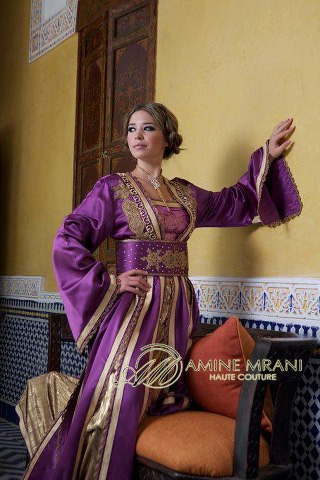Traditional Food in Morocco
Cultural Food is first and foremost an innovative concept in Royan, Charente-Maritime, both deli for fun at home .
The cuisine in Morocco is as varied as the country’s landscape, in part due to numerous culinary influences such as Spain, France, Portugal, Italy, Senegal, Turkey and the Berbers. Morocco imports very little food, so its Mediterranean spread of fruits and vegetables tend to be locally grown and fresh. Much of the country’s livestock is free range—picture cattle meandering in the mountains and valleys—resulting in fresh, flavorful meat.
 Although each region is known for its unique flavors and dishes, meals throughout the country commonly feature meats with veggies and are often spiced with cumin, cinnamon, saffron and paprika. This bouquet of flavors is woven into Morocco’s breakfasts, lunches, and dinners.
Although each region is known for its unique flavors and dishes, meals throughout the country commonly feature meats with veggies and are often spiced with cumin, cinnamon, saffron and paprika. This bouquet of flavors is woven into Morocco’s breakfasts, lunches, and dinners.Breakfast
Whether you prefer your breakfast big or small, packed with carbs or protein, the variety of Morocco’s traditional breakfast options should leave you feeling satisfied and ready for a full day of exploring.
To start the day with a light meal, stop by a street stall for Moroccan pita bread. Freshly squeezed orange juice is also abundant on the street, but you may want to bring your own cup, since many vendors only quickly rinse their glasses between customers. Other likely finds include seasonal fruit, French pastries (which can come with honey or jam), doughnuts and, of course, coffee and mint tea.
If your body demands something more substantial before venturing out, a sit down meal will likely offer all of the options from the streets plus omelets with a touch of fresh cumin, Moroccan pancakes and perhaps even lamb’s head.
Lunch
 Lunch is traditionally the biggest meal of the day (except during Ramadan), typically taking place from noon to 3:00 p.m. or so, followed by a nap. Many places close over the lunch hour (although a lot of venues that cater to tourists stay open), so it may be worthwhile to take your time and opt for a sit down meal. This more formal lunch is generally served over multiple courses, so be prepared to stay for a while.
Lunch is traditionally the biggest meal of the day (except during Ramadan), typically taking place from noon to 3:00 p.m. or so, followed by a nap. Many places close over the lunch hour (although a lot of venues that cater to tourists stay open), so it may be worthwhile to take your time and opt for a sit down meal. This more formal lunch is generally served over multiple courses, so be prepared to stay for a while.Salad, accompanied by homemade bread, is the first course in a sit down meal and includes an array of veggies such as tomatoes, onions, green peppers, beets, garlic and eggplant, as well as spices and herbs.
Couscous is a traditional main course. It is often cooked with veggies, nuts and spices and served with meat, such as roasted lamb or chicken cooked with lemon and olives. Morocco is also well known for tagine, a richly flavored stew that is slow-cooked in an earthen pot. There are numerous varieties of tagine, but simply put, this stew typically consists of meats, veggies and sauce, flavored with a combination of Moroccan spices.
Dessert is often served at some point during the meal rather than at the end. With desserts like bastilla (layers of flaky pastry with toasted almonds, cinnamon and cream), gazelle’s horns (a pastry with almond paste, sprinkled with sugar), coconut fudge cakes, almond cookies and orange slices with cinnamon, sampling these goodies while you still have room is absolutely worthwhile. At the end of the meal, you can expect to wind down with a sweetened mint tea.
As with breakfast, your best bet for a quicker, lighter lunch is to pick up something from a street vendor. If you look for a stall with a line of locals, you’re more apt to find a clean place with a reputation for fresh, tasty food.
Kebabs are quite popular in Morocco and easy to grab on the go. They typically include veggies plus chicken, lamb, meatballs (which may be made from beef or lamb) or a mix of meats (which can include kidney, liver and heart). Lamb sausage and pizza are also common finds, and seafood is especially plentiful along the Atlantic coast. If you’re willing to sit down for a moment, consider picking up a stew and pita bread.
Dinner
Starting around 9:00 p.m., dinner is usually a lighter meal eaten at home. Harira is a traditional dinner dish (especially during Ramadan), which is a thick tomato and lentil soup with lamb, chickpeas, noodles, cinnamon, ginger, turmeric and cayenne. Street stalls offer more snack-like evening options like roasted almonds, cumin-spiced hard-boiled eggs and roasted corn. Bocaillos (sandwiches) have become increasingly popular in Morocco. They’re usually made with your choice of meat, seafood or omelet along with veggies.
morocco culture,moroccan food,morocco food,moroccan cuisine,morocco beaches,moroccan meal,beaches in morocco,moroccan culture,hercules cave,hercules cave morocco















